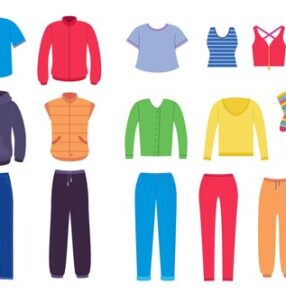
It’s 2019, and Christine Hunsicker finally admits that her company, Gwynnie Bee, was a massive experiment. The company, which was founded in 2011 as a plus-size clothing subscription rental service, and has now shipped more than five million boxes of clothing sized 0-32, was Hunsicker’s way of testing her more ambitious business hypothesis: Could you build a technology and warehouse engine so that any retailer could rent out its clothes? In other words: software-as-a-service, but for clothing.
“Our investors all knew, and employees knew on a high level,” says Hunsicker. “But, even in the office, we didn’t talk about it a ton for the first three years.”
Rent the Runway, now valued at a billion dollars, is credited with pioneering the high-end clothing rental economy. But Hunsicker, a serial COO who’s previously scaled and sold two technology companies, has long had a vision to democratize that concept for any clothing brand. Eight years after kicking off her “pilot,” the New York City-based company, now called CaaStle (a play on the phrase “clothing-as-a-service”), has 500 employees spanning Mountain View, California, to Delhi, India, more than $100 million in funding, and an emerging client base of retailers.

Ironically, it wasn’t other upstarts tinkering with the retail-clothing model that first prompted the idea. “Stitch Fix didn’t give us hope the model would work,” Hunsicker says. “Airbnb did.” Her logic at the time: If people were willing to rent out one of the most intimate possessions–their pillow–then certainly they’d wear worn-but-well-laundered clothing. Fashion, applied to a subscription model like that of Netflix, had massive potential. She thought: “We can make a ton of money.”
But, back in 2011, investors weren’t as confident–and they wanted proof of concept. Thus began the ruse: a business-to-business model born by masquerading as a consumer business. “Our sole purpose” at the time, says Hunsicker, “was to first build this brand.”
Table of Contents
ToggleFashion Goes to the Lab
Hunsicker has always been more of an operations geek than a brand builder. After attending toy-design school, a decision she credits to “wanting to build things but not being able to code,” she became the eighth employee at Right Media in the mid-2000s. She ascended to COO, growing the company to 350 employees and helping to navigate a pivot to become the first ad exchange, ultimately selling to Yahoo for $850 million in 2007. Not ready to retire at 32, she went to Drop.io, where she took the same role, steering growth of the company and helping it sell to Facebook for another tidy sum. At that point, Hunsicker realized: “I’m actually good at this, and I shouldn’t be cleaning up other peoples’ messes.”
The Right Media whirlwind stuck with her. Hunsicker suspected if the company had built a more technologically robust platform from the start, it could have avoided many of the problems it faced when transitioning to B2B. In brainstorming future company ideas with a few friends, mostly former colleagues, she began thinking about it in the context of fashion retail, which by 2010 was beginning to experience its own turmoil. She thought: “If you want to wear something, you have to own it–that’s a problem. If you could bring along an access model along with a buying model, you could solve a lot of the core issues in the industry.”
When Hunsicker launched Gwynnie Bee in 2012, leading an online retailer of a consumer-facing brand was way out of her comfort zone. The team’s goal was to have 25 customers in the first month, but after 60 days, they had just 19. “At that point, I had a massive panic attack,” Hunsicker admits. It turned out the site’s photography wasn’t great–an obvious detail to anyone who comes out of retail. “We ended up reshooting everything overnight,” she says. “Hey, we weren’t ‘consumer’ people!”
After six years building Gwynnie Bee, Hunsicker finally had the technology platform and infrastructure in place, including fulfillment centers and massive dry-cleaning operations in Groveport, Ohio, and Phoenix. She also had all the data she needed to demonstrate that the business model was viable. “Customers were proving nice lifetime values, and we were very gross-margin positive at that point,” she says. It could only get better–once the company transitioned from consumer-facing to powering other companies’ subscriptions, most of the significant financial strains like acquiring customers and investing in inventory would disappear. “In B2B, those costs go away,” she says.
Taking the Experiment Public
By 2017, Hunsicker started quietly meeting with brands: CaaStle could help them monetize latent inventory, introduce them to valuable new Millennial customers, and help forge deeper relationships with the people already shopping at their stores. By November–with Gwynnie Bee now operating as one of CaaStle’s brands–Hunsicker had signed five clients onto its platform, including Ann Taylor, Express, Rebecca Taylor, New York & Co., and Vince. (In early 2019, American Eagle joined too.) The new clothing subscription services range from $49.95 to $160 per month, depending on the brand.
Late last year, fashion brand Vince launched Vince Unfold, its new subscription service, which offers customers four items a month for $160. Vince CEO Brendan Hoffman says he was eager to experiment with CaaStle’s service as a customer-acquisition tool–and it’s working. “Fashion is about that emotional connection with the customer,” Hoffman says. “Now they have unlimited ability to interact with the brand.”
Another client, Ann Taylor, is already seeing that 50 percent of the people signing up to subscribe to its new $95 per month service, Infinite Style by Ann Taylor, are first-time customers. And of those who aren’t, the subscription is increasing the customers’ spending by 100 percent.
As CaaStle begins to take off, it now finds itself in a bustling category. The “apparel leasing” category has grown from almost non-existence in 2012, to an anticipated $4.4 billion by 2028. In 2016, Rent the Runway launched Unlimited, which sends customers four designer items of their choice at a time. Le Tote, founded in 2012, also offers rental clothing box subscriptions that offer a variety of brands, with an option to purchase.
Hunsicker may have two successful exits under her belt, but she says this time around, she wants to build a company for the long term. Now armed with data from not just Gwynnie Bee, but from all six retailers CaaStle works with, she’s confident her company can woo others–a dozen by year-end is the goal–and be poised to go public within years. “All of our theoretical value propositions are now real value propositions,” she says.
[“source=inc”]
| M | T | W | T | F | S | S |
|---|---|---|---|---|---|---|
| 1 | 2 | 3 | 4 | 5 | 6 | |
| 7 | 8 | 9 | 10 | 11 | 12 | 13 |
| 14 | 15 | 16 | 17 | 18 | 19 | 20 |
| 21 | 22 | 23 | 24 | 25 | 26 | 27 |
| 28 | 29 | 30 | 31 | |||



























